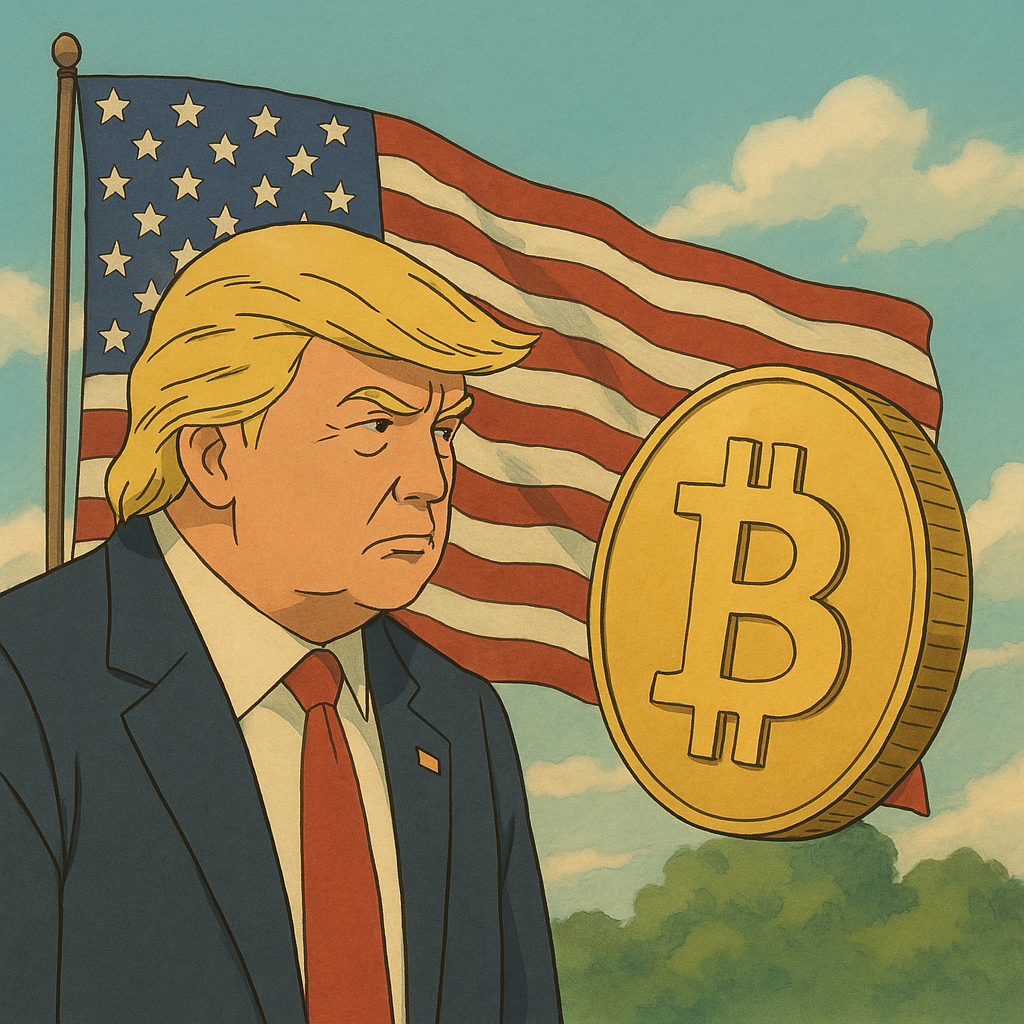The conversation around Bitcoin’s long-term future just got a major boost, thanks to former U.S. President Donald Trump’s recent comments. Trump’s proposed tariff plan for 2025 is raising concerns among economists and investors alike — and many believe it could strengthen the idea that Bitcoin, the world’s most valuable cryptocurrency, might one day outlast the U.S. dollar.
Trump’s Proposed Tariffs: A Risky Move for the Dollar?
Trump has proposed a 10% tariff on all imported goods and up to 60% tariffs on products from China if he wins the 2025 election. This is not just political talk — during his earlier term, Trump was known for aggressive trade policies. Now, a return to that strategy could reignite inflation, hurt international trade relationships, and put pressure on the strength of the U.S. dollar.
Higher tariffs usually mean higher costs for American consumers and businesses. In the long run, such policies can lead to economic instability, higher inflation, and reduced global confidence in the dollar. That’s why many in the crypto community believe Bitcoin could become a safer, more resilient alternative.
Bitcoin as a Hedge Against Inflation and Policy Uncertainty
Over the past decade, Bitcoin has increasingly been viewed as a hedge against inflation and central bank manipulation. It’s decentralized, borderless, and has a fixed supply of 21 million coins — making it a powerful contrast to fiat currencies like the U.S. dollar, which can be printed endlessly.
Crypto analysts are already talking. James Check, lead analyst at Glassnode, pointed out that Trump’s trade plans could revive the narrative that “Bitcoin will outlast the U.S. dollar.” His comments are echoed by many investors who see Bitcoin as “digital gold” — a long-term store of value in a world of monetary chaos.
The Case for Bitcoin Over Traditional Currencies
Bitcoin doesn’t rely on any central authority. No government can devalue it by printing more of it. And unlike the U.S. dollar, which is closely tied to government debt, inflation, and political decisions, Bitcoin runs on code and math.
As Trump’s economic vision raises fears of rising tariffs and potential trade wars, Bitcoin looks increasingly appealing. Many see it not just as a speculative asset but as a hedge against poor fiscal policy and inflationary risks.
How Is the Market Reacting?
On Monday, April 8, 2025, the crypto markets showed signs of recovery after a volatile previous week. Bitcoin was trading at around $71,300, up 2.6% in 24 hours. Ethereum also saw gains, trading around $3,650 with a 1.3% increase.
Interestingly, altcoins like XRP and Dogecoin led the rally, both surging by nearly 10%. While their jump was not directly related to the Trump news, it shows growing speculative interest and a possible shift back to crypto assets as economic uncertainty looms.
Current Crypto Market Snapshot (April 8, 2025):
-
Bitcoin (BTC): $71,300 (+2.6%)
-
Ethereum (ETH): $3,650 (+1.3%)
-
XRP: $0.62 (+10%)
-
Dogecoin (DOGE): $0.20 (+10%)
-
Cardano (ADA): $0.58 (+2.5%)
Bitcoin vs US Dollar: The Bigger Picture
The U.S. dollar has long been the world’s reserve currency, but its position is not unshakable. Countries like China and Russia have been moving away from dollar-based systems, and central banks around the world are exploring digital currencies (CBDCs).
Bitcoin’s role in this shifting landscape is growing. Unlike any fiat currency, Bitcoin can’t be controlled, frozen, or inflated away by governments. This makes it attractive not just to individual investors, but also to institutions and even nations seeking financial sovereignty.
Could Bitcoin Actually Outlast the Dollar?
It’s still too early to say. The U.S. dollar remains dominant in global trade, and the American economy is resilient. However, every time political or economic uncertainty spikes, Bitcoin strengthens its case.
In a world where tariffs, debt ceilings, and inflation dominate headlines, the idea of a decentralized currency becomes more powerful. Whether Bitcoin outlasts the U.S. dollar or not, it’s clear that it’s no longer just a fringe asset — it’s now part of the global financial conversation.
Experts Remain Divided, But the Trend is Clear
Some financial experts argue that Bitcoin is too volatile, too risky, and too immature to replace traditional money. Others believe it’s the future. But no matter which side you’re on, one thing is certain — Bitcoin is no longer just about tech enthusiasts or speculative traders. It’s a legitimate alternative in times of economic uncertainty.
Why This Matters Now
-
Trump’s tariff policy could increase inflation and weaken the dollar.
-
Bitcoin’s supply cap makes it resistant to inflation.
-
Investors are seeking hedges against fiat risk.
-
The narrative of “Bitcoin over the dollar” is gaining real-world support.
Final Thoughts
The idea that Bitcoin could outlast the U.S. dollar might have seemed far-fetched a few years ago. But in today’s world — shaped by political division, economic instability, and inflation concerns — that idea doesn’t sound so crazy anymore.
Trump’s proposed tariffs are just one of many signs that we may be entering a new economic era. Whether it’s used as a store of value, a hedge, or a future global currency, Bitcoin is here to stay — and it’s becoming more relevant with each passing policy decision.

